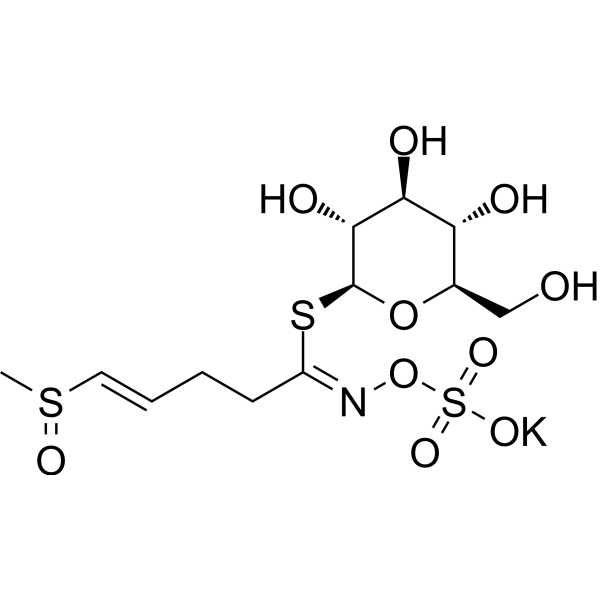
Glucoraphenin
CAS No. 108844-81-1
Glucoraphenin( —— )
Catalog No. M32073 CAS No. 108844-81-1
The seeds of Raphanus sativus L.
Purity : >98% (HPLC)
 COA
COA
 Datasheet
Datasheet
 HNMR
HNMR
 HPLC
HPLC
 MSDS
MSDS
 Handing Instructions
Handing Instructions
| Size | Price / USD | Stock | Quantity |
| 50MG | Get Quote | In Stock |


|
| 100MG | Get Quote | In Stock |


|
Biological Information
-
Product NameGlucoraphenin
-
NoteResearch use only, not for human use.
-
Brief DescriptionThe seeds of Raphanus sativus L.
-
DescriptionThe seeds of Raphanus sativus L.
-
In Vitro——
-
In Vivo——
-
Synonyms——
-
PathwayOthers
-
TargetOther Targets
-
Recptor——
-
Research Area——
-
Indication——
Chemical Information
-
CAS Number108844-81-1
-
Formula Weight473.6
-
Molecular FormulaC12H20KNO10S3
-
Purity>98% (HPLC)
-
SolubilityDMSO, Pyridine, Methanol, Ethanol, etc.
-
SMILES——
-
Chemical Name——
Shipping & Storage Information
-
Storage(-20℃)
-
ShippingWith Ice Pack
-
Stability≥ 2 years
Reference
molnova catalog



related products
-
Cannabisin F
Melongenamides B-D and Cannabisin F have anti-inflammatory activity, they exhibit inhibitions of nitric oxide production in lipopolysaccharide-induced RAW 264.7 macrophages with IC50 values ranging from 16.2 to 58.5 uM.
-
Itaconic anhydride
Itaconic anhydride
-
Bendazac
Bendazac is an anticataract drug. It may act by preventing protein denaturation.



 Cart
Cart
 sales@molnova.com
sales@molnova.com


